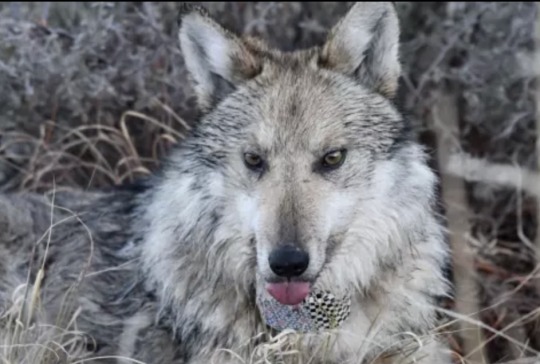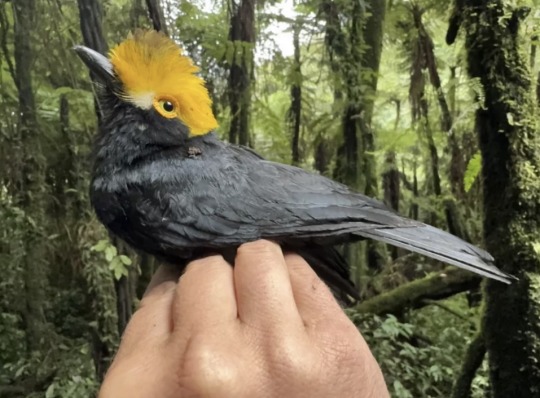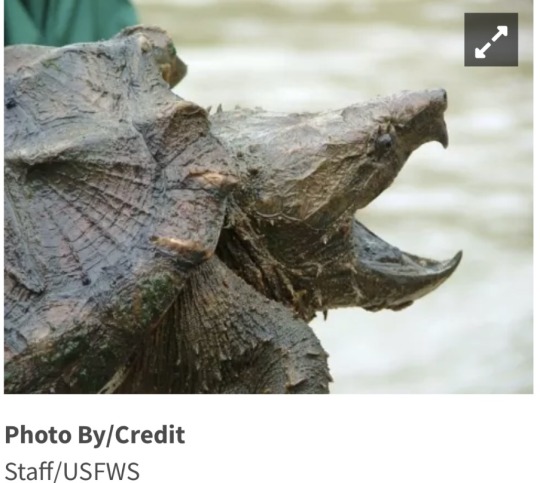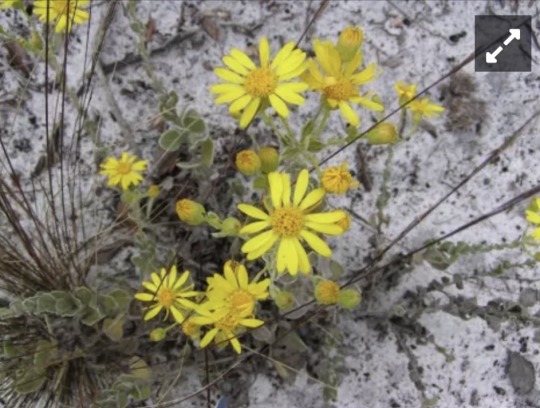#golden-crested helmetshrike
Explore tagged Tumblr posts
Text
Cool Zoology Stories of 2024
Happy new year! As we head into 2025, here's a few fun zoology highlights from the last year.

The Iberian Lynx is no longer endgangered
Species Concerned: Iberian Lynx (Lynx pardinus)
Source: Here
Image Source: Here
The International Union for the Conservation of Nature (IUCN) is the organisation responsible for compiling information on the size and trends seen in species’ wild populations and assigning them a “conservation status” based on how threatened they are determine to be. There are three increasingly concerning categories a species may be sorted into (vulnerable, endangered or critically endangered, in that order,) and while species may be classified as increasingly threatened if their populations continue to decline they can also be raised to a less threatened category should their population increase. In the summer of 2024, the IUCN made an exciting announcement; based on an assessment carried out throughout 2023 the Iberian Lynx (the most threatened of the four lynx species, and among the world’s rarest wildcats) had done just that, being upgraded to vulnerable from endangered!
Easily distinguished from other lynxes by it’s the distinctive pair of “beard-like” fur tufts on its chin, the Iberian Lynx, as its name suggests, is found only in the southern Iberian Peninsula which stretches across Spain and Portugal. Its already small range has shrunk further due to rapid declines in its primary prey, the European Rabbit (Oryctolagus cuniculus), further aggravated by habitat loss, disease outbreaks, conflict with humans and the addition genetic pressures that species with small populations experience. By 2001 the species’ population had declined to as few 62 adults, but since then intensive efforts to increase the populations of European Rabbits, protect remaining Iberian Lynx populations, introduce captive-bred individuals and encourage land owners to reduce impacts on any lynx populations on their land has allowed for a steady increase – as of 2023 the population was believed to have risen to 648 adults, and members of this species have returned to long-vacant regions of their former range! While the Iberian Lynx remains threatened and continued efforts are needed to maintain these increases, the species’ new conservation status shows that these efforts are working, and that there may yet be hope for this beardy big cat’s future.

Big News on Baby Sharks!
Species Concerned: Great White Shark (Carcharodon carcharias)
Source: Here
Image Source: Here
Despite its large size, near-cosmopolitan distribution and status as easily one of the most famous and recognisable fish on earth, there’s a lot we don’t know about the Great White Shark. In particular, there are some major gaps in our understandings of the mating habits of adult Great Whites, and in the early development of their pups. This year, however, progress was made in filling some of these gaps; in April an article published in the journal Frontiers in Marine Science described activity within a “creche” of young (1-6 year old) Great Whites off the coast of California, demonstrating that (among other things) they moved between deeper and shallower coastal waters throughout the day and seemed to carefully position themselves within the water column in order to maintain a healthy body temperature and thereby facilitate growth and development (unlike many fish adult Great White Sharks are able to regulate their body temperature through metabolic activity much like mammals can, but it seems that younger individuals have a reduced ability to do so and are more reliant on environmental conditions to regulate their body temperatures. This is particularly exciting as an article published this January to another journal, Environmental Biology of Fishes critically examined footage recorded by wildlife photographer TheMalibuaArtist of a small, round-featured Great White Shark off also found near California’s coast that had an odd, pale film attached to its skin and concluded that (while it is possible that the film is the result of some previously undocumented disease or mutation) it may represent the first ever video footage of a newborn Great White Shark, with the film being debris that attached to the potential pup during live birth. The Great White Shark, despite its dreaded reputation, is itself classified as vulnerable by the IUCN, so gaining greater understanding of how members of these species live in their earliest years may prove invaluable in protecting wider populations!

The 200th Anniversary of the First Dinosaur Getting Named
Species Concerned: Megalosaurus (Megalosaurus bucklandii)
Source: Here
Image Source (excluding some...minor additions): Here
On February 20th 1824 the geologist and palaeontologist William Buckland became the first person to give a formal scientific name to a (non-avian) dinosaur, describing a set 160 million year old reptile-like bones found in Oxfordshire, England as “Megalosaurus”, which can be translated literally to “big lizard” (though is more often translated as the more dignified-sounding “great lizard.”) This means that this February marked the 200th anniversary of Megalosaurus getting its name and, in some ways, the beginning humanity’s long-standing love of and obsession with dinosaurs.
Based on the incomplete remains that had been discovered Buckland originally imagined Megalosaurus as being an enormous, slow-moving, lizard-like animal (kind of like an iguana crossed with an elephant.) However, further studies into the fossils of Megalosaurus and of numerous anatomically similar and therefore likely related animals have since demonstrated that it was a large, likely relatively fast-moving carnivorous biped, and a relative of modern birds (which, like Megalosaurus, are therapods.) Megalosaurus lived in what is now northern Europe throughout the mid-Jurassic period, while its closest relatives, the Megalosaurids, could also be found across Africa, Asia and North America and survived until the very end of the Jurassic. 17 years after Megalosaurus got its name it, alongside the early cretaceous ankylosaur Hylaeosaurus and the iconic spiky-thumbed ornithopod Iguanadon (all still imagined to be iguana-like at the time) would be recognised as relatives of one another based on similar anatomical features, becoming the first three genera to be classified as part of the clade that today contains all dinosaurs, the Dinosauria.

The Golden-Crested Helmetshrike was Photographed for the First Time
Species Concerned: Golden-Crested Helmetshrike (Prionops alberti)
Source: Here
Image Source: Here
Between December 2023 and January 2024 a collaborative team of researchers from the Democratic Republic of Congo and the USA set out to document the wildlife living in the Itombwe mountain region of South Kivu, DOC. Records of the species present in an around Itombwe are limited and every observation made during the trip was valuable, but perhaps the most exciting was the several sightings of the Yellow-Crested Helmetshrike, marking the first time this species has been formerly recorded in nearly 20 years and allowing for it to be photographed for the first time ever!
While several potential sightings have been reported elsewhere in central Africa, the Golden-Crested Helmetshrike is believed to be endemic to the DOC, making its home mainly in humid forests at high altitudes. Immediately distinguished from other birds in their range by the titular crests of bright yellow feathers that runs across their heads, members of this species live in small flocks and are extremely agile in flight, using their agility to hunt airborne insects. A lack of internationally available documented sightings of this species since the early 2000s had led to fears of its potential extinction, but as at least 18 individuals were sighted during the team’s expedition the species is now known not only to be surviving, but potentially to be more abundant within its home range than previously thought!

Frogs and Wolves got in on Pollination
Species Concerned: Izecksohn's Brazilian Tree Frog (Xenohyla truncata) and Ethiopian Wolf (Canis simensis)
Sources: Here and Here
Image Sources: Here and Here
Insects are by far the most important pollinators on earth (with some 80% of plants relying on insect-based pollination to reproduce,) but there are also many important vertebrate pollinators (most notably nectar-drinking bats and birds.) Pollinating vertebrates are important not only to wild plants but also to crops, wit mangos, durians and bananas all relying heavily on vertebrates to spread their pollen. 2024 saw two surprising new additions to the list of potential vertebrate pollinators; the unusual Izecksohn's Brazilian Tree Frog and the endangered Ethiopian Wolf!
Found only in Rio de Janiero, Brazil, Izecksohn's Brazilian Tree Frog is unusual among frogs in that while almost all frogs are carnivorous members of this species prominently feed on fruit and nectar. Like other nectar-feeding animals, as they move between flowers they carry pollen with them, making them the only known amphibian pollinators. The Ethiopian Wolf, native to high-altitude regions of Ethiopia, is among the rarest wild dogs on earth and has typically been thought of as a strict carnivore. In November of 2024, however, members of this species were recorded feeding on the flowers of the Red Hot Poker Plant (Kniphofia foliosa), transferring pollen on their muzzles in the process. While further studies are needed to determine quite how important either species is in pollination, it still suggests that the number of pollinating vertebrate species in the world may be greater than previously thought!
--------------------------
Have a great new year!
#Happy New Year!#zoology#biology#animal#animals#mammalogy#marine biology#ornithology#paleontology#wildlife#iberian lynx#great white shark#megalosaurus#golden-crested helmetshrike#ethiopian wolf
177 notes
·
View notes
Text
I’m not sure how reliably I’ll be able to keep up with it, but I’ve been wanting to start posting weekly or monthly Good News compilations, with a focus on ecology but also some health and human rights type stuff. I’ll try to keep the sources recent (like from within the last week or month, whichever it happens to be), but sometimes original dates are hard to find. Also, all credit for images and written material can be found at the source linked; I don’t claim credit for anything but curating.
Anyway, here’s some good news from the first week of March!
1. Mexican Wolf Population Grows for Eighth Consecutive Year

““In total, 99 pups carefully selected for their genetic value have been placed in 40 wild dens since 2016, and some of these fosters have produced litters of their own. While recovery is in the future, examining the last decade of data certainly provides optimism that recovery will be achieved.””
2. “Remarkable achievement:” Victoria solar farm reaches full power ahead of schedule

“The 130MW Glenrowan solar farm in Victoria has knocked out another milestone, reaching full power and completing final grid connection testing just months after achieving first generation in late November.”
3. UTEP scientists capture first known photographs of tropical bird long thought lost

“The yellow-crested helmetshrike is a rare bird species endemic to Africa that had been listed as “lost” by the American Bird Conservancy when it hadn’t been seen in nearly two decades. Until now.”
4. France Protects Abortion as a 'Guaranteed Freedom' in Constitution
“[A]t a special congress in Versailles, France’s parliament voted by an overwhelming majority to add the freedom to have an abortion to the country’s constitution. Though abortion has been legal in France since 1975, the historic move aims to establish a safeguard in the face of global attacks on abortion access and sexual and reproductive health rights.”
5. [Fish & Wildlife] Service Approves Conservation Agreement for Six Aquatic Species in the Trinity River Basin

“Besides conserving the six species in the CCAA, activities implemented in this agreement will also improve the water quality and natural flows of rivers for the benefit of rural and urban communities dependent on these water sources.”
6. Reforestation offset the effects of global warming in the southeastern United States

“In America’s southeast, except for most of Florida and Virginia, “temperatures have flatlined, or even cooled,” due to reforestation, even as most of the world has grown warmer, reports The Guardian.”
7. Places across the U.S. are testing no-strings cash as part of the social safety net
“Cash aid without conditions was considered a radical idea before the pandemic. But early results from a program in Stockton, Calif., showed promise. Then interest exploded after it became clear how much COVID stimulus checks and emergency rental payments had helped people. The U.S. Census Bureau found that an expanded child tax credit cut child poverty in half.”
8. The Road to Recovery for the Florida Golden Aster: Why We Should Care

“After a five-year review conducted in 2009 recommended reclassifying the species to threatened, the Florida golden aster was proposed for removal from the Federal List of Endangered and Threatened Plants due to recovery in June 2021, indicating the threats to the species had been reduced or eliminated.”
9. A smart molecule beats the mutation behind most pancreatic cancer
“Researchers have designed a candidate drug that could help make pancreatic cancer, which is almost always fatal, a treatable, perhaps even curable, condition.”
10. Nurses’ union at Austin’s Ascension Seton Medical Center ratifies historic first contract

“The contract, which NNOC said in a news release was “overwhelmingly” voted through by the union, includes provisions the union believes will improve patient care and retention of nurses.”
This and future editions will also be going up on my new Ko-fi, where you can support my art and get doodled phone wallpapers! EDIT: Actually, I can't find any indication that curating links like this is allowed on Ko-fi, so to play it safe I'll stick to just posting here on Tumblr. BUT, you can still support me over on Ko-fi if you want to see my Good News compilations continue!
#hopepunk#good news#wolf#wolves#mexican wolf#conservation#solar#solar power#birds#abortion#healthcare#abortion rights#reproductive rights#reproductive health#fish and wildlife#turtles#alligator snapping turtle#snapping turtle#river#reforestation#global warming#climate change#climate solutions#poverty#social safety net#flowers#endangered species#cancer#science#union
16 notes
·
View notes
Text
First ever pictures of bird feared extinct for 20 years
New Post has been published on https://petn.ws/6q3M9
First ever pictures of bird feared extinct for 20 years
Watch more of our videos on Shots! and live on Freeview channel 276 Visit Shots! now Scientists have managed to capture photos of a golden-crowned bird feared extinct after more than 20 years without being seen. The first-ever picture of a yellow-crested helmetshrike, listed as ‘lost’ by the American Bird Conservancy, was taken during a recent […]
See full article at https://petn.ws/6q3M9 #BirdNews
0 notes
Text
Small birds 8K ULTRA HD with Names and Sounds

Small Birds in Vivid 8K Ultra HD: Names and Nature's Melodies Immerse yourself in the breathtaking world of small birds showcased in immaculate 8K resolution. This video not only offers vivid visuals of these avian wonders but also introduces each with their names and distinctive calls, letting you identify and appreciate them. Small BIRDS 8K ULTRA HD with Names and Sounds https://www.youtube.com/watch?v=m91SBnRxlYQ From the vibrant hues of the cardinal bird and sunbird to the mesmerizing sounds of the dark-eyed junco and bearded reedling, each moment brings you closer to nature's beauty. Whether you're an avian enthusiast or just looking to unwind, this 8K experience provides both educational and aesthetic value. With added ambient sounds like the rustling of leaves, gentle waves, and distant animal calls, the ambiance becomes more authentic and immersive. For an enhanced viewing experience, we've incorporated educational elements, including commentary, voice-overs, and on-screen identifiers for each bird. Some of the avian stars featured include: - Scarlet tanager, cape longclaw, daurian redstart - White-crested helmetshrike, barred antshrike, red-backed shrike - Silver-breasted broadbill, european goldfinch, baltimore oriole - Golden-breasted starling, barred warbler, banded kingfisher - Broad billed hummingbird, woodlark, meadowlark ...and many more. With a delightful combination of nature's visuals and symphony, this video serves as a relaxing escape and an educational journey. Dive in and let the colorful world of birds enrich your day!
8K Ultra HD: The Pinnacle of Visual Clarity
As the world of technology constantly evolves, the realm of display resolutions has reached new heights with 8K Ultra HD. Here's a deep dive into this visual marvel: Definition: 8K Ultra HD, with a resolution of 7680 × 4320 pixels, offers a staggering four times the number of pixels as 4K (3840 × 2160) and sixteen times the resolution of Full HD (1920 x 1080). Benefits: - Unparalleled Detail: 8K resolution captures intricate details that can be discerned even when viewed up close on massive screens. - Enhanced Depth: The richness of pixels in 8K translates to more depth and three-dimensionality, making visuals pop out. - Improved Color Accuracy: With the additional data in each frame, there's a broader range of colors and greater color accuracy. - Post-Production Flexibility: For videographers, having 8K footage means more flexibility during editing, such as cropping, zooming, and stabilizing videos without sacrificing quality. Hardware Considerations: - Display Size: To fully appreciate 8K, one would typically need a larger screen (65 inches or above). - High-speed Connections: Streaming or playing 8K content requires robust data handling. HDMI 2.1, for instance, supports 8K video at 60fps. - Storage: 8K videos, particularly those at higher frame rates, can be massive in size, necessitating considerable storage capacity. Content Availability: As of recent years, 8K content has been somewhat limited. However, with the advent of 8K cameras and TVs, more content creators are adopting this resolution, making it more accessible to the general audience. Future of 8K: With the proliferation of technology, 8K will likely become more standard, especially for larger displays and professional setups. As bandwidth improves and storage becomes cheaper, 8K could soon be as commonplace as 4K has become today. In conclusion, 8K Ultra HD is not just a step but a leap forward in the world of visual display technology, promising a viewing experience that is nothing short of mesmerizing. Whether for professional use or personal entertainment, 8K is the epitome of what the future holds. Read the full article
0 notes
Text
The Bounty of Kafue’s Busanga Plains
New Post has been published on https://tagasafarisafrica.com/africa-travel-news/safari-sightings/the-bounty-of-kafues-busanga-plains/
The Bounty of Kafue’s Busanga Plains
The vast wilderness of the Kafue National Park unfolded below me as we flew above it, a land I knew virtually nothing about. I was immediately drawn in… stunned at its magnitude and the varying landscape below me, intermittently hidden by clouds, and made all the more tantalising for it. The Kafue is one of the largest national parks in Africa and also one of its least explored wild regions.
After landing, our drive to camp passed through an otherworldly region of snouted harvester termite mounds, beautiful miombo woodlands, vast plains and seasonal wetlands interspersed with lush islands and small streams. In the late summer, the vast floodplains are covered with shallow water and even now they are filled with large herds of aquatic red lechwe.
Shumba is a small camp nestled in amongst the lush palms, figs and sausage trees of one of the Busanga Plains numerous islands. These plains are a unique seasonal wetland. At different times of the year, the view from camp alternates between vast shimmering floodplains dotted with waterlilies and dry plains covered with golden grass as far as the eye can see.
Over the days we spent relaxing in the idyll that is Shumba, we were delighted by the birding as rosy-throated longclaw and grey crowned cranes became commonplace sightings on drives. The sooty chat was spotted and yellow-throated sandgrouse caused us much excitement as we had never seen this species. A fellow birder was successful in his hunt for the elusive Schalow’s turaco and returned giddy with excitement.
… And this was before we got to the large mammals! Lichtenstein’s hartebeest, roan antelope, oribi, elephant, puku, Cape buffalo, blue wildebeest and shy warthog were seen often, with the ubiquitous red lechwe now almost ignored. With all of this prey, the large pride of lion that was our daily highlight to view was no surprise. Three muscular lionesses and a regal male presided over six rambunctious eight-month-old cubs and one adorable three-month-old. The young lions provided hours of entertainment as they jockeyed for position, ambushed one another and jealously guarded a sought-after pair of lechwe horns from one another.
We left with the feeling that four nights was not enough time to see all this vast wilderness has on offer, and I am now eagerly planning my return.
BIRDS WE SAW
Rosy-throated longclaw
Blacksmith lapwing
Long-toed lapwing
Crowned crane
Wattled Lapwing
Goliath heron
Yellow-throated sandgrouse
Yellow-billed duck
Red-billed teal
Hottentot teal
Namaqua dove
Cape turtle dove
Coppery-tailed coucal
Open-billed stork
Yellow-billed stork
Saddle-billed stork
Hooded vulture
White-backed vulture
Lappet-faced vulture
Steppe eagle
Short-tailed eagle
Red-billed spurfowl
Red-capped lark
Cape wagtail
African jacana
Golden-tailed woodpecker
Olive woodpecker
African fish-eagle
Trumpeter hornbill
Helmeted guineafowl (yellow-crested morph)
White-browed robin-chat
Scarlet-chested sunbird
African stonechat
Black-shouldered kite
Yellow-billed kite
Greater and lesser egret
Reed cormorant
African spoonbill
Red-billed oxpecker
Red-billed quelea
Böhms bee-eater
Barbet
White-crested helmetshrike
Grey go-away bird
Square-tailed nightjar
Squacco heron
Grey heron
Ground hornbill
Dusky lark
Zitting cisticola
Arrow-marked babbler
Masked weaver
Red-billed firefinch
Sacred ibis
Hadeda ibis
Egyptian goose
Wattled crane
Written and photographed by Sarah Kerr Post courtesy of Wilderness Safaris
0 notes